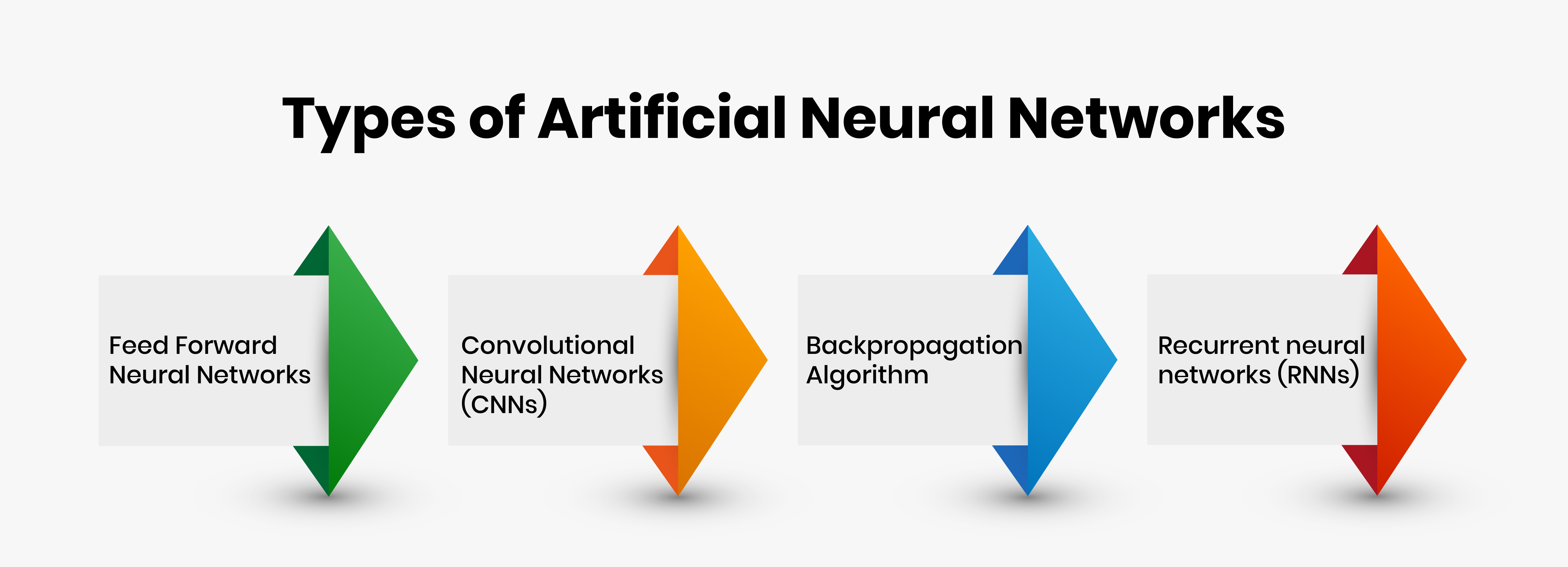Neural Networks: A Deep Dive into AI's Building Blocks

At the forefront of artificial intelligence–– the most popular subject of computer science, stands the intricate realm of neural networks. Sitting at the core of deep learning–– a subset of machine learning–– neural networks are reshaping industries and redefining the boundaries of what machines can achieve, all while mimicking the functions of a human brain.
Based on a simple mathematical formula from your high school, the neural network has captivated the imagination and transformed several industries. From self-driving cars to voice assistants, these digital brain-inspired networks are transforming how we live and work. But how?
The neural network has one prime goal to achieve human-level accuracy. Read along to unravel and understand neural networks, how they work under the hood, and more.
What Is A Neural Network?
This cutting-edge technology aims to stimulate the human brain's neural connections and its ability to learn and make decisions. But what is a neural network? At its core, the artificial neural network is a mathematical equation, typically a complex equation— made to resemble the function of a human brain. We should be describing this network as an artificial neural network of ANN to distinguish it from a very unartificial network–– our brain.
This machine learning process also called deep learning, allows them to capture intricate patterns and representations within data, making them exceptionally powerful for tasks like image recognition, natural language processing, and more.
How Does A Neural Network Work?
A neural network is a group of artificial neurons that, when clubbed together, creates a layer. There are three node layers— an input node layer, a hidden layer, and an output layer, which reflect the behavior of the human brain.
Each network has one input and one output layer, but it can have more than one hidden layer. These layers of artificial neurons or interconnected nodes attempt to solve complicated problems, leading to improved decision-making and enhanced productivity. At nodes these layers form a network, allowing programs to recognize patterns and solve common problems in Artificial intelligence.
These nodes or artificial neurons, on their own, work on a linear regression model–– a mathematical model used to predict the future. The weights of the connections between the nodes determine how much influence each input has on the output. This implies that each node has input data, weight, a bias or a threshold, and an output.
Let's understand how a single neural network works:
-
Input Layer: The input layer is the entry point for external data. These input nodes receive and process the data and perform initial analyses or categorizations before passing it to the hidden layers.
-
Hidden Layer(s): The hidden layer is where the actual magic happens. Neural networks can incorporate multiple hidden layers, each progressively refining and processing the information received from the preceding layer. This hierarchical processing based on weight enables the network to capture complex patterns within the data.
-
Output Layer: The output layer provides the final result or output of the neural network's data processing. Depending on the task, the output layer may consist of one or more nodes.
Now, if we talk about deep neural networks— multiple layers of a single neural network— they theoretically can map any input type to any output type, making them exceptionally versatile. However, they demand extensive training, typically requiring millions of data in the training dataset to learn effectively. This complexity and training demands are balanced by their capability to model intricate relationships and patterns within data, making them instrumental in various machine learning and artificial intelligence applications.
The Most Common Types of Neural Networks
Neural networks come in various forms, each tailored to specific tasks, serving distinct purposes in the Artificial Intelligence landscape. Each artificial neural network is distinguished by how data flows from input to output nodes. Let's explore some of the most common types of artificial neural networks:

- Feed Forward Neural Networks
These neural networks follow a unidirectional flow, i.e., moving from input to output nodes, each node in one layer is connected to every node in the subsequent layer. The feed forward neural network continuously improves predictions through feedback processes.
- Convolutional Neural Networks (CNNs)
With its five hidden layers, CNNs perform specific mathematical functions, including summarization and filtering called convolutions. These neural networks are valuable for image-related tasks like image recognition and classification, as each layer focuses on extracting and processing distinct image attributes, such as edges, color, and depth.
- Backpropagation Algorithm
The Backpropagation Algorithm is a crucial technique in neural networks that helps these networks learn and improve through a feedback loop. The algorithm facilitates learning by assigning the higher weight values to the correct node, while incorrect ones receive lower weights within the network. Backpropagation plays a pivotal role in enhancing the accuracy and efficiency of various machine learning tasks, making it an indispensable tool in artificial intelligence.
-
Recurrent neural networks (RNNs)
Recurrent Neural Networks (RNNs) are specialized neural networks created for sequential data tasks. They are used in natural language processing, speech recognition, and time series analysis by maintaining memory of past information while processing current inputs. Unlike traditional neural networks, advanced RNN variants like Long Short-Term Memory (LSTM) and Gated Recurrent Unit (GRU) have overcome some limitations in capturing long-term dependencies, making them valuable tools for capturing complex patterns in sequential data.
Who Uses Neural Networks in Deep Learning?
Deep Learning is the subfield of Machine Learning that involves neural networks to model and solve complex problems. These deep learning systems have found their way into virtually every industry.
Neural networks are employed by professionals across diverse fields like,
-
Researchers,
- Data Scientists, and
- Engineers,
As well as industries like healthcare, finance, and technology.
Due to its attributes that address complex problems, improve decision-making processes, and automate tasks, Deep Learning is an essential tool for a broad spectrum of applications.
Importance of Neural Networks and Why They Matter
Neural networks hold central importance in artificial intelligence and machine learning. Their importance lies in their unparalleled ability to achieve accuracy and automation.
With their unparalleled capability for complex pattern recognition, neural networks excel in image and speech recognition, revolutionizing industries like healthcare and autonomous vehicles. Additionally, due to their capacity to adapt to data, they rapidly learn and evolve from extensive datasets.
Their adaptability to data makes neural networks invaluable in applications ranging from natural language processing to financial forecasting. With their automation power, industries can enhance efficiency by automating labor-intensive tasks, streamlining operations, and saving time.
Furthermore, their proficiency in natural language understanding empowers chatbots, virtual assistants, and language translation systems to facilitate more effective human-machine communication and general observations without explicit training.
How Neural Networks Are Used in Real-Life?
With the ability to identify anomalies, neural networks are changing how people and organizations function. Beyond theoretical concepts, deep learning is causing a tangible difference in our daily lives. As their real-world applications continue to expand, here’s where the artificial neural network is applicable in real life:
- Healthcare
- Finance
- Natural language processing
- Autonomous vehicles
- Image a video analysis
- Gaming
Healthcare
- Neural networks are used to analyze medical images such as X-rays, MRIs, and CT scans to assist doctors in diagnosing conditions like cancer, fractures, and neurological disorders with higher accuracy.
- Can also analyze urine and blood samples, track glucose levels, determine ion levels in fluids, and detect various pathological conditions.
- Neural networks also help identify potential drug candidates by analyzing molecular structures, predicting their effectiveness, and speeding up the development process.
- It can also be used for patient outcome predictions.
Finance
- Neural networks are highly regarded in banks and financial institutions for fraud detection. This is done by analyzing customer behavior and transaction patterns, enhancing the security of customers.
- With the help of neural networks— convolutional neural networks and recurrent neural networks— predictions on the stock exchange can accurately be made. This deep learning helps traders to make informed investment decisions in real time.
Natural Language Processing
- Automated virtual agents and chatbots like Siri, Alexa, and Google Assistant use natural language understanding for responsive interactions.
- Translation models like Google Translate utilize neural networks to provide accurate and context-aware translations between languages.
- Document summarization and article generation.
Autonomous vehicles
- Self-driving cars like the Tesla car extensively use neural networks to process to make decisions and navigate safely. This autopilot car can figure out the optimal route, manage complex intersections with traffic lights, and navigate urban streets, while moving at high speed, all using deep neural networks or deep learning.
- Neural networks are used in drone navigation systems to autonomously navigate and perform tasks, such as package delivery and surveillance.
Image and Video Analysis
- Convolutional neural networks (CNN) are used in image and speech processing, which is employed for facial recognition in security systems, unlocking your smartphones, verifying identity at airports, and others.
- Streaming platforms like Netflix and YouTube also utilize neural networks to recommend personalized content based on your preferences and viewing history.
Gaming
- In video games, neural networks are incorporated to create realistic and challenging non-player characters (NPCs) and opponents, enhancing the gaming experience.
- Deep learning agents are used in gaming to compete with human players in complex strategy games.
- In gaming, the most commonly used neural networks are artificial neural networks, convolutional neural networks, and recurrent neural networks.
Neural Networks’ Role in Artificial Intelligence
Deep neural network is the technological marvels that power AI's incredible capabilities. Designed to mimic the functioning of the human brain, deep neural networks play a fundamental role in artificial intelligence (AI) by serving as the building blocks for many AI applications.
These networks undergo "training" through exposure to numerous input-output examples. For instance, by repeatedly presenting them with input-output pairs, they uncover critical features that aid in task execution, such as recognizing dog-related attributes or distinguishing dog images from non-dog images–– similar to how humans do. In essence, neural networks provide the cognitive abilities necessary for AI systems to process and understand data, make decisions, and automate tasks, thus playing a pivotal role in the development and advancement of artificial intelligence.
Conclusion
Neural networks are at the forefront of the AI revolution, shaping the way we work, communicate, and interact with technology. Their ability to learn from data and make intelligent decisions has opened up countless possibilities across industries. With ARTiBA, explore the edge of intersections of machine learning and deep learning with emergent, real-world computing, digital, cloud, and internet and communication technologies. As we continue to refine and expand, the capabilities of neural networks, their impact on our lives is only poised to grow. Understanding neural networks and their developments is essential in today's data-driven world.







